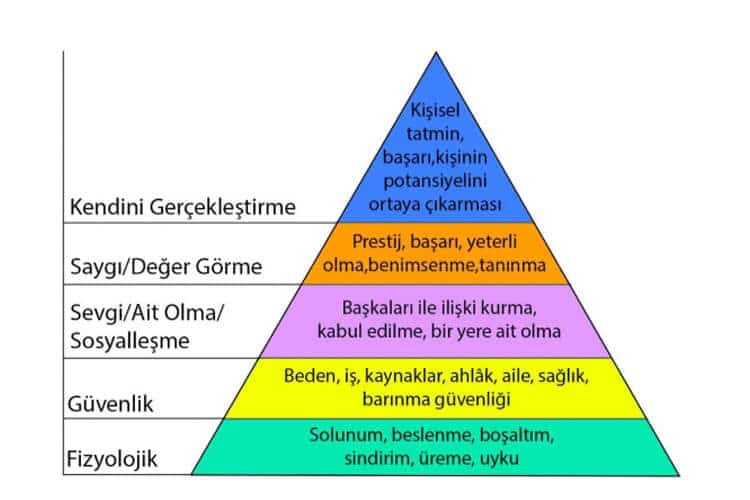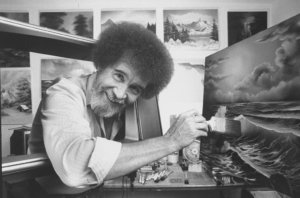Self-actualization, in psychology, is about reaching the full potential of the individual. First 20th. It was put forward by Kurt Goldstein, a doctor specializing in neuroanatomy and psychiatry at the beginning of the century. As theorized by Goldstein, self-actualization is the main goal of all organisms.
All his behaviors and impulses are seen as manifestations of this overarching motivation. However, it was psychologist Abraham H. Maslow who popularized self-actualization. It defines the situation more narrowly.
He differs from Goldstein in his view of how self-actualization can emerge as a motivator and under what conditions. Similar to Goldstein, Maslow defined self-actualization as the realization of one’s greatest potential.
But in his discussions of self-actualization he only talks about humans rather than whole organisms. In addition, his theory suggests that the drive for self-actualization will emerge as a motivator only when various more basic needs are met.
Maslow’s Hierarchy of Needs
“ Hierarchy of Needs ”, our needs for self-actualization in order to reach our true potential, self-realization and reach our “ideal self”, also called our “existential” needs; these include personal and creative development achieved through the realization of our full potential.
The act of self-actualization is the apex of what Maslow describes in his hierarchy of human needs. In this hierarchy, lower needs (defined as “pre-strong” needs) typically emerge before higher needs arise.
Physiological needs are among the most important in this hierarchy. Although Maslow refuses to make a list of physiological needs, he mentions almost endless contributors to physical homeostasis. When we meet physiological needs, the next level of need, security, immediately rises to consciousness and begins to guide behavior.
For this reason, having a constant and constant food source can lead to the forgetting of this need and pushing it behind other needs. This cycle of need, fulfillment, and forgetting occurs at every level of the hierarchy.
Near the top of Maslow’s hierarchy are esteem needs. These needs include the desire for competence, high self-esteem, esteem, a sense of power, and general self-worth. Maslow states that if these needs are not met, the individual is either deeply discouraged or develops maladaptive methods to deal with feelings of inferiority and worthlessness.
Maslow’s Concept of Self-actualization
Maslow argued that in order to be truly happy, painters must draw, writers write, and musicians play (or compose) instruments. On the other hand, he also says that even if all other needs are fulfilled, self-actualization does not always emerge as a motivator. For example, there are many forms depending on individual abilities and values.
Maslow also states that self-actualization is one of the least studied and understood needs due to its relative rarity. He adds that it is the exception rather than the rule that the individual’s other needs are adequately met so that self-actualization can emerge as a motivator.
However, there are countless examples of people living in situations of poverty, loneliness, and low self-esteem and yet seeming to be self-actualizing through their work. There are examples of pain and difficulties that seem self-actualizing.
The most important of these (the ones that come to mind first); Vincent van Gogh and Anne Frank. Van Gogh was practicing his art, but he also wrote many times in his correspondence with his brother Theo that he was in pain.
Maslow’s theory is not insensitive to such exceptions. He added that in some people the creative impulse is so strong that in most individuals it outweighs other needs, including those considered pre-powerful. He did not go so far as to say that in some cases self-actualization occurs because of difficulty, but he acknowledged that it can happen despite unmet needs. Questions remain, then, about individuals who seem to be self-actualizing in direct response to conditions that threaten their needs.
Characteristics of Self-Realizing Individuals
Acceptance and realism: Self-actualization reflects an individual’s realistic and accurate perception of who he is, what he can do, and the environment around him. When we have a wrong view of ourselves or the outside world, there is a dissonant, disturbing and harmful inequality between our inner self and the outside world.
Self-actualization is achieved by those who have the most correct view of themselves and the world around them. Problem-centering: Self-actualized individuals do not focus only on internal gain; They appreciate the benefits of solving problems that affect others in order to improve the outside world. The desire to help others stems from an internal sense of right and wrong based on empathy.
Spontaneity: The self-actualized individual thinks and acts spontaneously as a result of having a correct self and worldview. Despite this spontaneity, these individuals tend to act and think within accepted social norms and according to the expectations of others. These individuals are also often open to interacting with others, yet unconventional styles of interaction in themselves, speech and other aspects of behavior.
Autonomy and Solitude: The self-actualized among us conform to societal norms and while they are often people-centered in problem solving, they often show a need for personal freedom and privacy. These special times are spent testing their potential both mentally (i.e. thinking about their problems) and physically (i.e. taking action to identify strengths and weaknesses).
Continued Freshness of Appreciation: No matter how simple, straightforward, or familiar the experience, the self-actualized individual has the ability to see things from new perspectives and to appreciate the breadth and wonder of things in their world. This capacity enables these individuals to develop new problem-solving strategies and, as a result, fosters creativity.
Peak Experiences: These are experiences that demonstrate three key characteristics: importance, satisfaction, and spirituality. These intense psychophysiological experiences include joy, curiosity. These are thought to be more common in self-actualized people. These peak experiences are thought to produce uplifting emotions such as inspiration, physical and mental vitality, and a renewed sense of perspective.



















